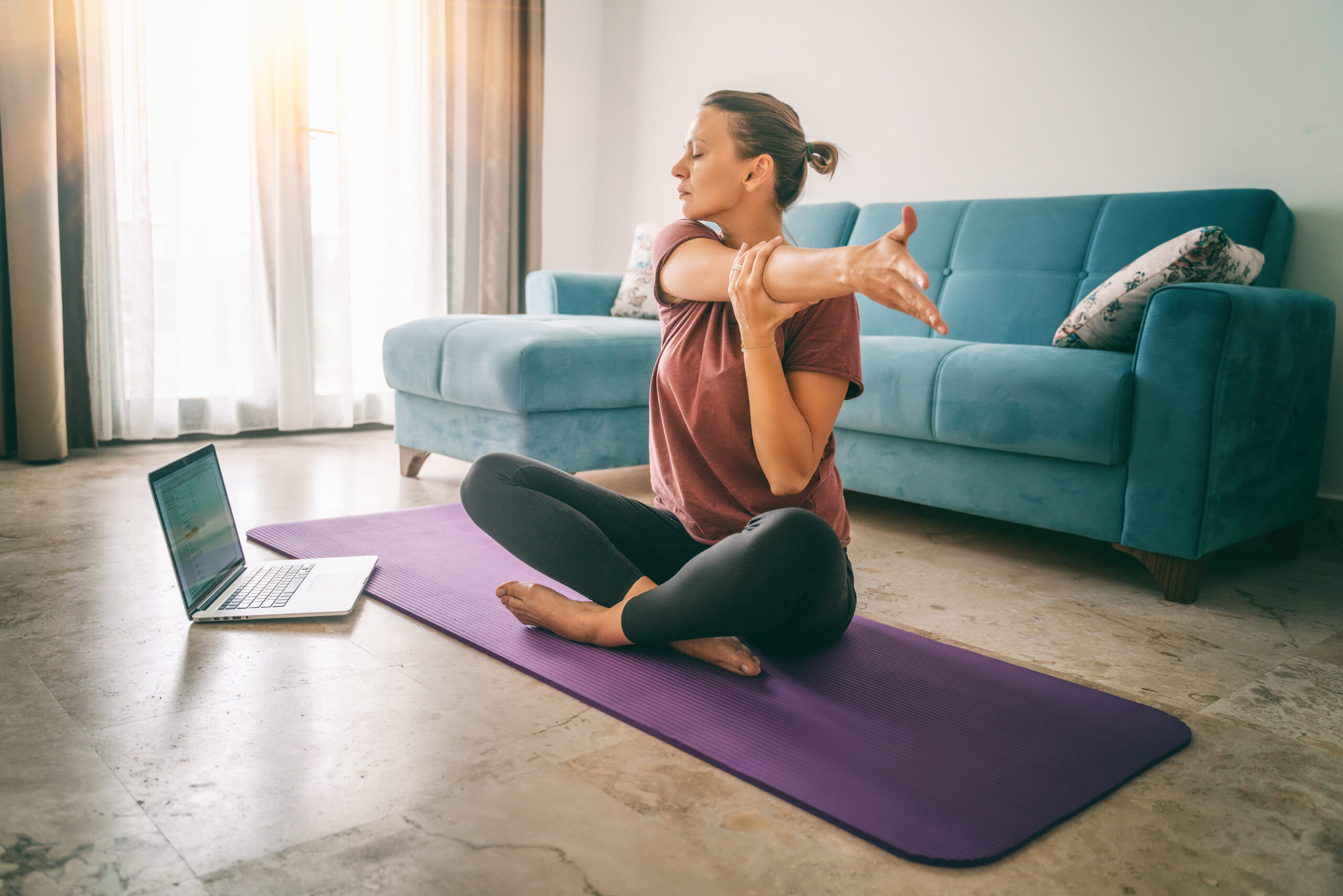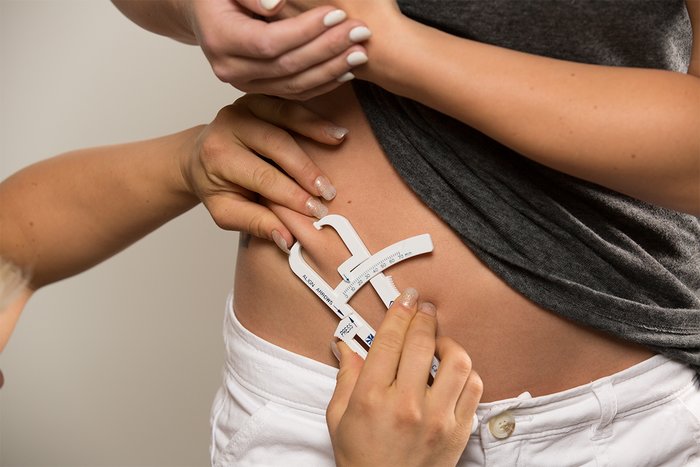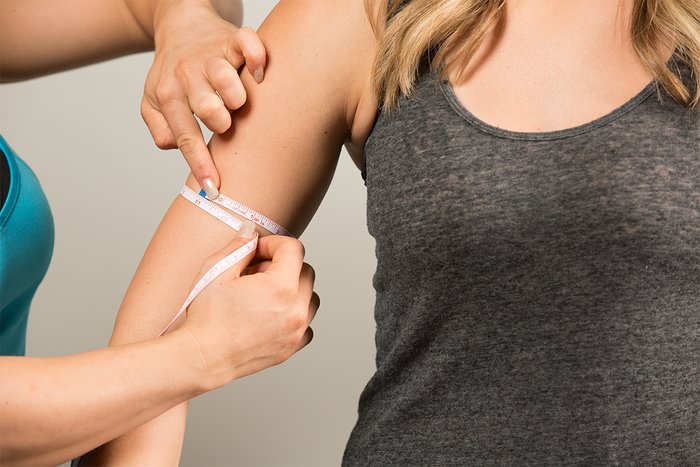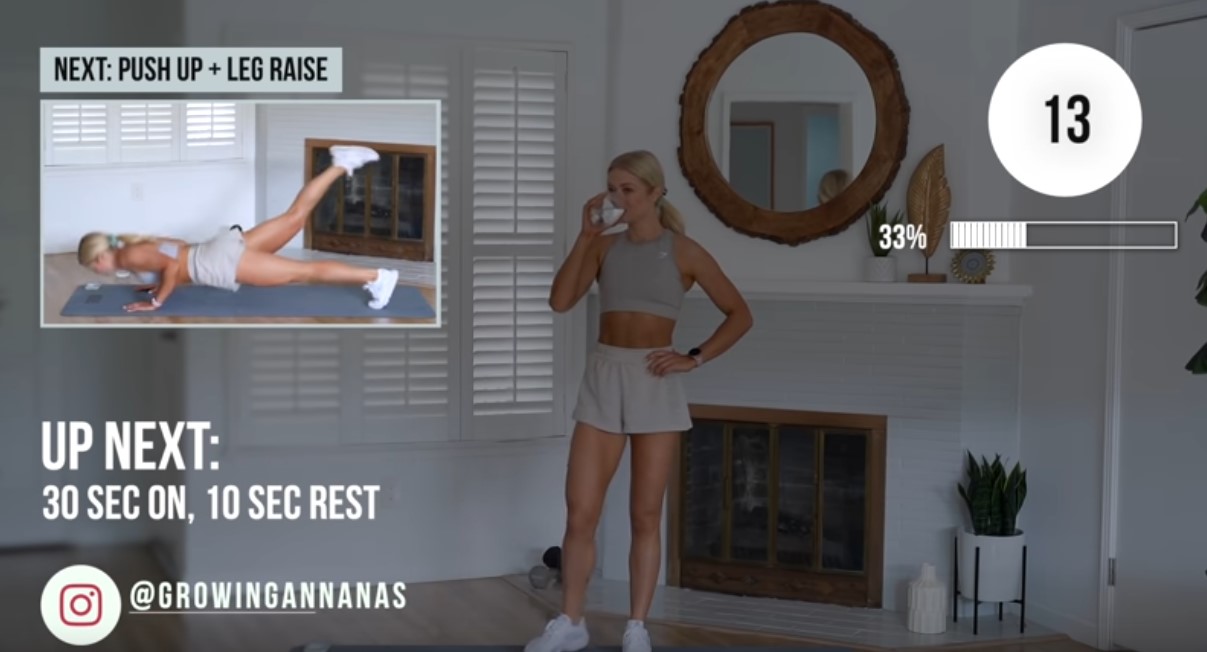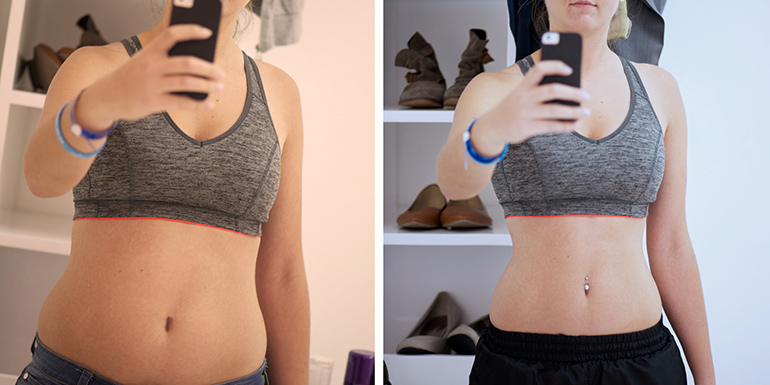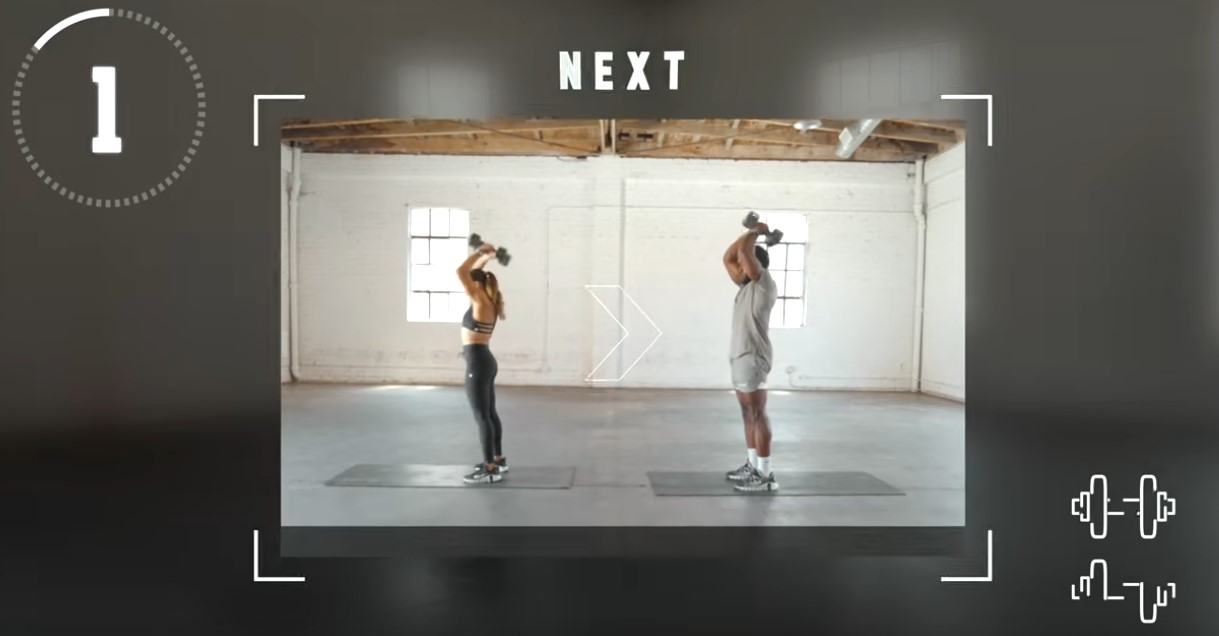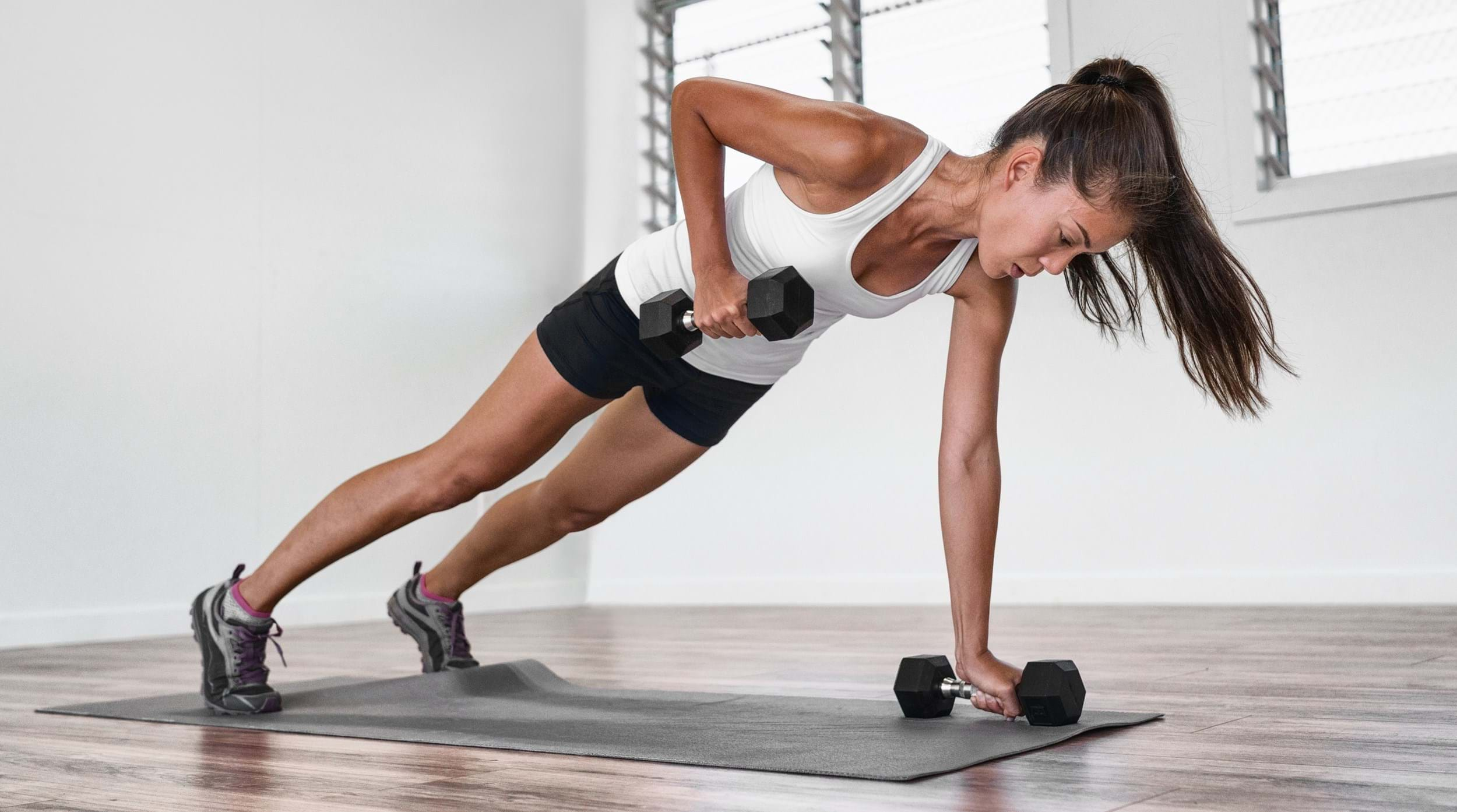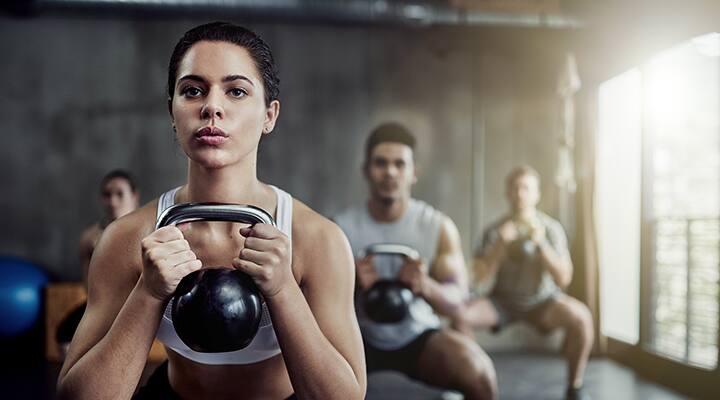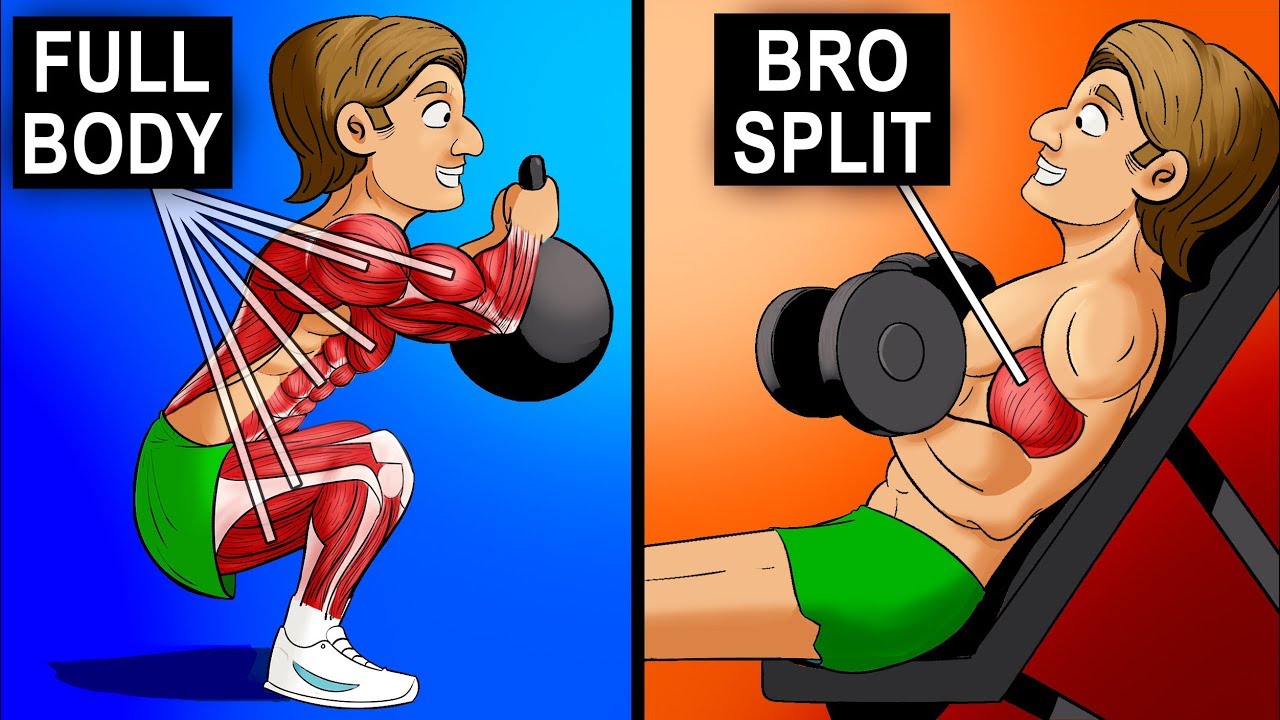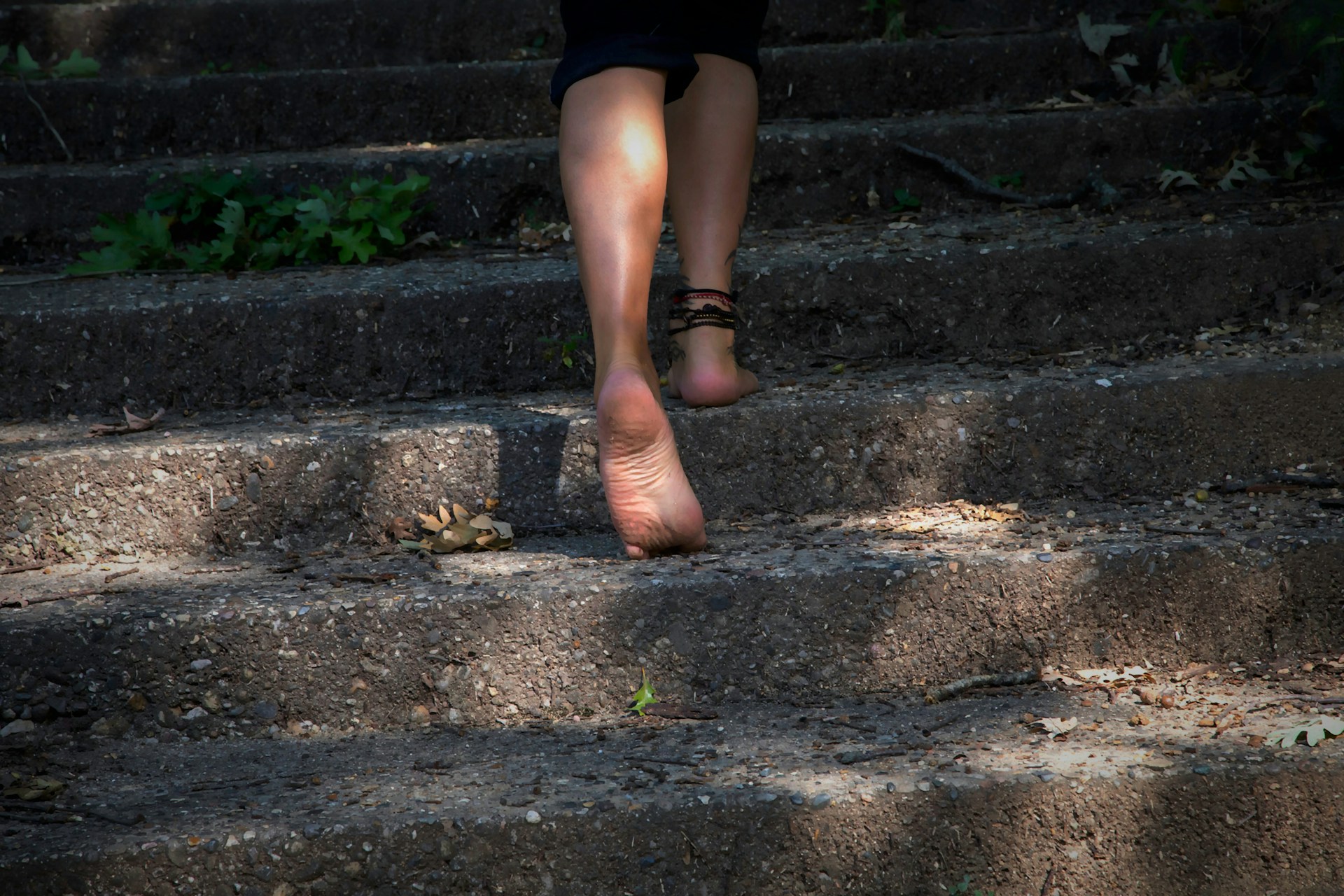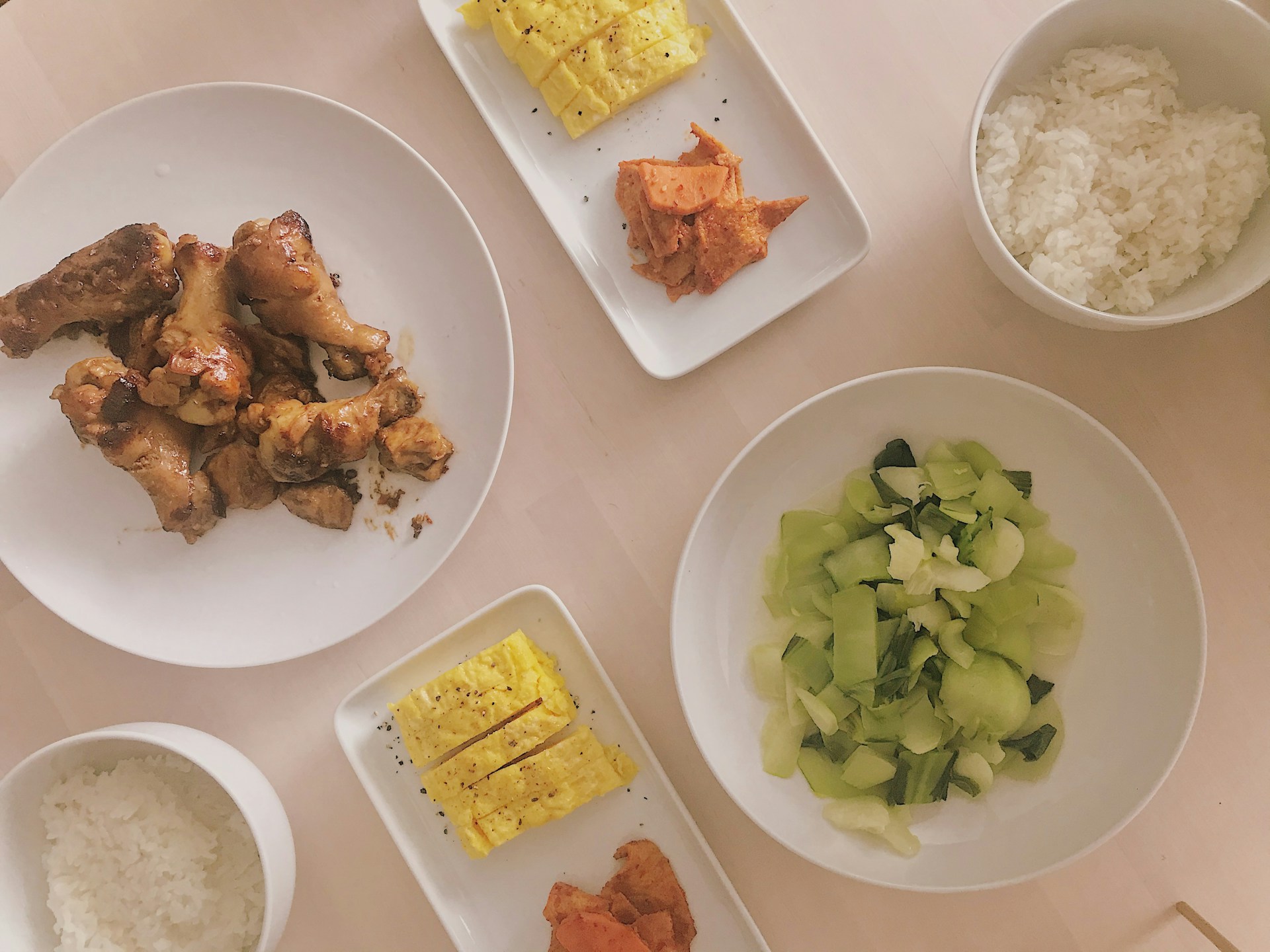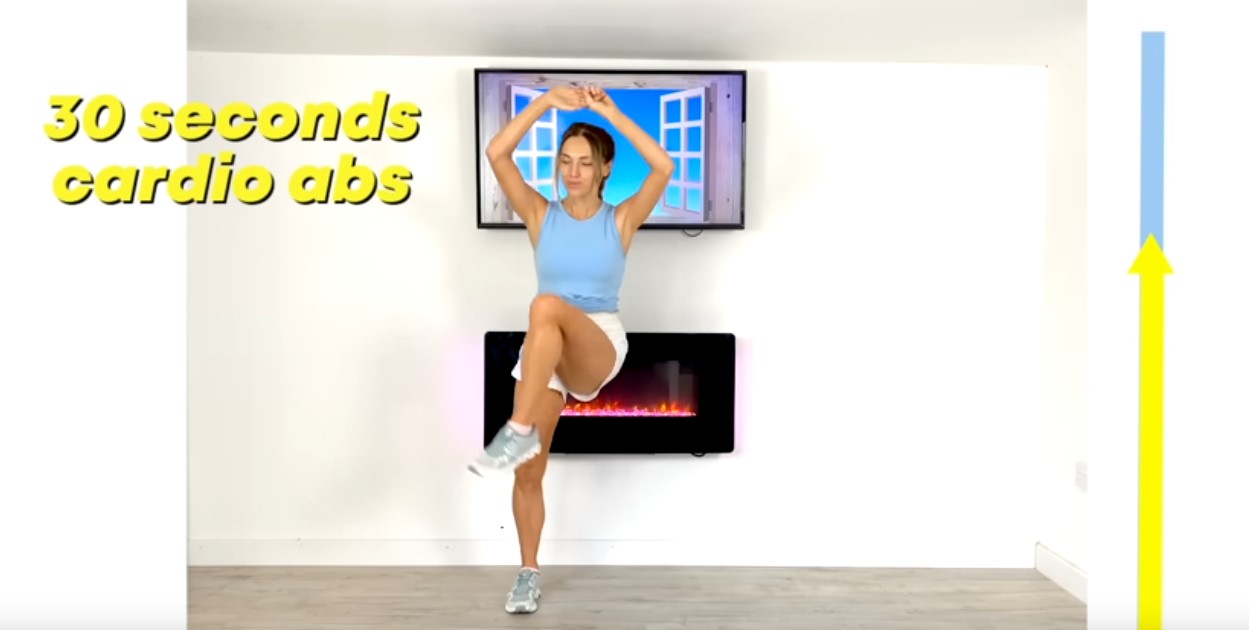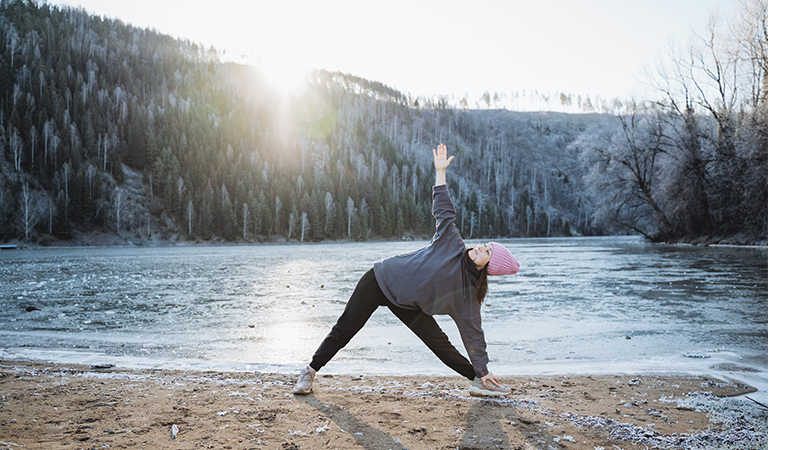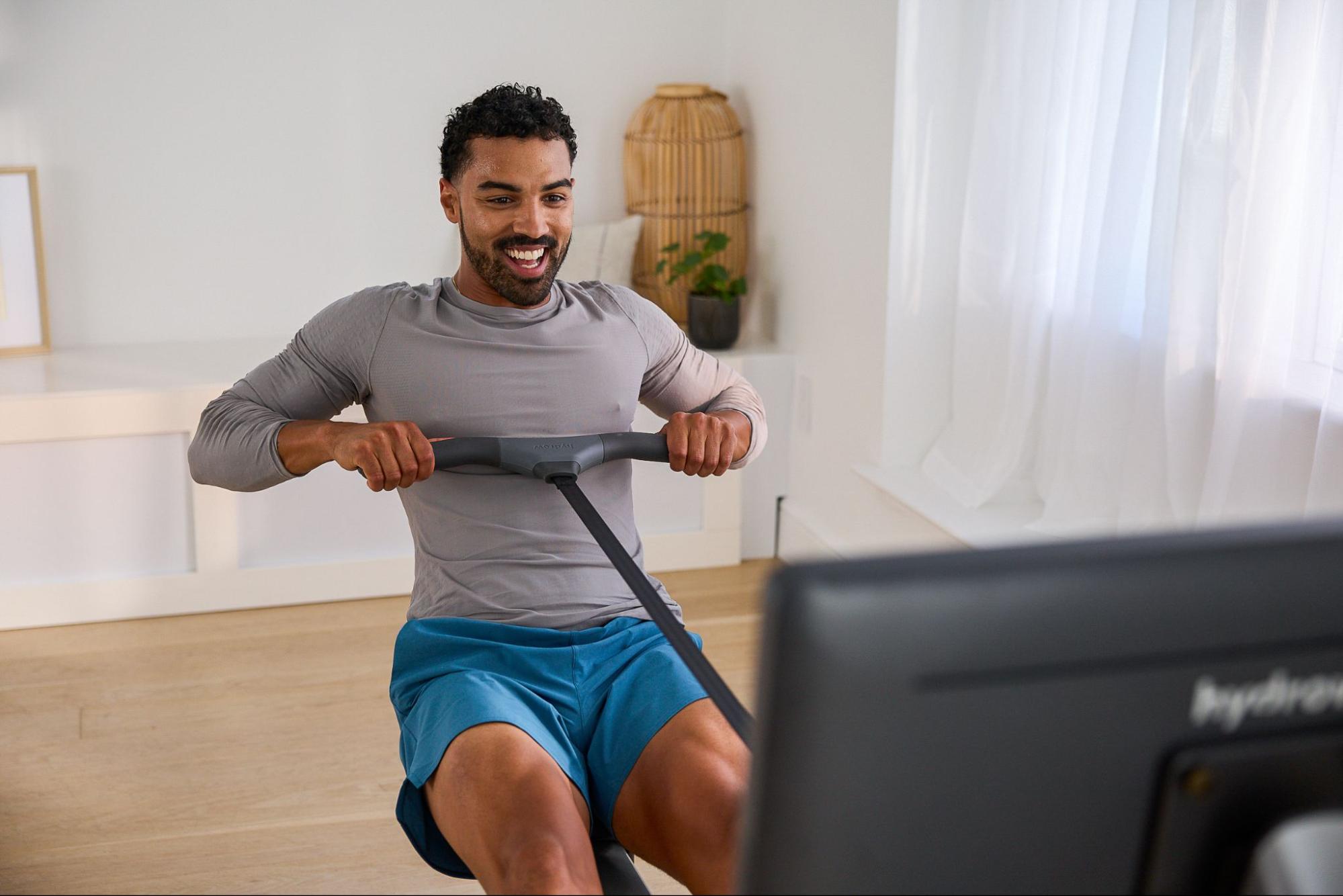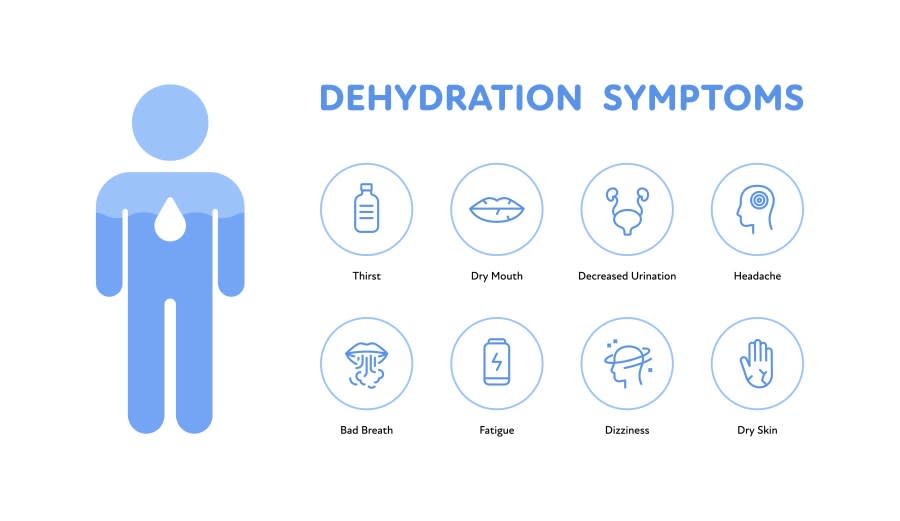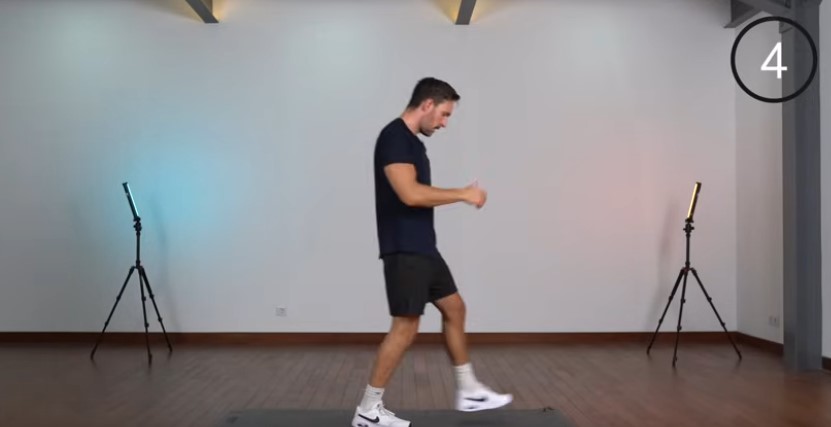Morning stretches help improve blood circulation, enhance mobility, reduce muscle tension, and awaken your nervous system. They’re also an excellent way to ease into the day with intention, mindfulness, and a sense of physical readiness—without needing any equipment. Even just five to ten minutes in the morning can lead to better posture, fewer aches and pains, and an overall boost in daily performance. Below are some of the most effective stretches to incorporate into your morning routine. 1. Standing Forward Fold This simple stretch targets your hamstrings, calves, and lower back. How to do it:Stand tall, hinge at your hips, and fold forward. Let your head and arms hang loose. Slightly bend your knees if your hamstrings are tight. Take 5–10 deep breaths. Benefits:Improves flexibility, decompresses the spine, and calms the nervous system. 2. Cat-Cow Stretch A gentle spinal mobilization to loosen up your back and core. How to do it:Begin on all fours. Inhale as you arch your back (cow), lifting your head and chest. Exhale as you round your spine (cat), tucking your chin toward your chest. Repeat for 5–10 cycles. Benefits:Increases spinal flexibility, reduces stiffness, and improves posture. 3. Seated Side Stretch Targets the obliques, lats, and lower back. How to do it:Sit cross-legged or on a chair. Raise your right arm overhead and gently lean to the left. Hold for 15–20 seconds, then switch sides. Benefits:Enhances side body flexibility and improves core activation. 4. Downward Dog A full-body stretch that energizes you for the day ahead. How to do it:Start on all fours. Tuck your toes and lift your hips toward the ceiling to form an inverted “V” shape. Keep your heels reaching toward the ground. Benefits:Stretches the entire posterior chain—shoulders, hamstrings, calves—and builds upper body strength. 5. Chest Opener Perfect for reversing “sleep posture” and tech-neck tendencies. How to do it:Clasp your hands behind your back and pull your arms down while lifting your chest. Hold for 20–30 seconds. Benefits:Opens up the chest, promotes better breathing, and reduces tension in the shoulders. 6. Neck Rolls A gentle, mindful movement to relieve neck tension. How to do it:Slowly roll your neck from side to side. Avoid doing full backward circles. Focus on a controlled range of motion. Benefits:Alleviates neck stiffness and promotes relaxation. 7. Child’s Pose A grounding and restorative stretch to end your routine. How to do it:Sit back on your heels, stretch your arms forward, and lower your chest to the floor. Hold for at least 30 seconds while breathing deeply. Benefits:Stretches the spine, hips, and shoulders, and helps center your mind. Takeaway Your morning doesn’t have to begin with grogginess or stiffness. Adding a few gentle stretches to your routine can improve your flexibility, reduce pain, and set a calm, focused tone for the rest of the day. The best part? You don’t need a gym or even a yoga mat—just a few quiet minutes and your body. Try this sequence tomorrow morning—you might never go back to snoozing your alarm again.
How to Track Your Fitness Progress Without a Scale
If the number on your scale isn’t moving, that doesn’t mean you’re not making progress. In fact, relying solely on your weight can be discouraging and misleading—especially when you’re gaining muscle, losing fat, or simply getting stronger. Here are some effective and practical ways to measure your fitness progress that go far beyond the scale. 1. Progress PhotosTake weekly or biweekly photos in the same outfit and lighting. Side-by-side comparisons over time will reveal physical changes that the scale can’t detect—like muscle tone, fat loss, and posture improvements. 2. Body MeasurementsUse a soft measuring tape to track the circumference of your waist, hips, thighs, arms, and chest. These numbers will often change even when your weight stays the same, especially if you’re building muscle while losing fat. 3. Performance TrackingWhether it’s lifting heavier weights, running longer distances, or doing more reps, tracking your workout performance is one of the best indicators of real progress. Keep a journal or use a fitness app to monitor improvements. 4. How Your Clothes FitWhen your jeans start to feel looser or your shirts fit better around your shoulders, it’s a strong sign of progress. Pay attention to how your clothes hug (or don’t hug) your body as you continue your routine. 5. Energy, Sleep & MoodImproved energy levels, better sleep, and a positive mood are all signs that your health is moving in the right direction. These lifestyle upgrades are just as important as any physical change. 6. Resting Heart RateIf you’re doing cardio regularly, your resting heart rate may drop—showing improved cardiovascular fitness. Many smartwatches track this automatically, making it easy to monitor over time. 7. Body Composition TestingTools like InBody scans or DEXA scans can give you a breakdown of your muscle mass, fat percentage, and more. While not necessary for everyone, they can be great for serious tracking. Bottom LineYour body is constantly evolving—don’t let the scale be your only measure of success. Celebrate non-scale victories, listen to your body, and keep showing up. The results will follow.
How to Track Your Fitness Progress Without a Scale
For many, the bathroom scale has long been the go-to tool for tracking fitness progress. But weight alone doesn’t tell the full story—and in some cases, it can even be misleading. If you’re building muscle, shedding fat, or simply becoming healthier, the scale might not reflect the positive changes happening in your body. Here’s how to effectively track your fitness journey without relying on numbers that fluctuate daily and don’t always capture the full picture. 1. Take Progress Photos Visual progress is one of the most powerful indicators of change. Take front, side, and back photos every two to four weeks in the same lighting, wearing similar clothing. Over time, you’ll notice changes in body composition, posture, and muscle definition that a scale might miss entirely. 2. Measure Your Body Tape measurements are a reliable and detailed way to track physical transformation. Record the circumference of key areas such as your waist, hips, chest, arms, and thighs every few weeks. These measurements give you a clearer picture of fat loss or muscle gain—regardless of what the scale says. 3. Monitor How Your Clothes Fit That pair of jeans you’ve had trouble buttoning? Or that fitted shirt that feels looser around the midsection? Your wardrobe can be a subtle but accurate gauge of your progress. Feeling more comfortable in your clothes is a great sign that your body is changing for the better. 4. Track Strength & Performance Gains Can you lift heavier? Run longer? Do more reps? Whether you’re strength training or doing cardio, recording your physical performance shows real, measurable improvement. Use a workout log or fitness app to track things like weight lifted, number of sets/reps, distance, or pace. 5. Monitor Your Energy Levels and Mood How you feel is just as important as how you look. Increased energy, better sleep, improved focus, and a more positive mood are often early indicators of improved fitness. These internal changes are signs that your lifestyle is working—even if the scale doesn’t move. 6. Check Your Resting Heart Rate A decreasing resting heart rate can indicate improved cardiovascular health. Many fitness watches and smart devices monitor this automatically, and it’s a subtle but powerful way to measure your aerobic progress over time. 7. Use a Body Composition Test If you want more data without relying on weight alone, body composition scans (like InBody or DEXA) can provide a breakdown of your fat mass, lean muscle, and hydration levels. These tests are more precise and informative than a simple number on a scale. Final Thoughts Your fitness journey is about more than a number. Progress comes in many forms—strength, endurance, confidence, and how you feel in your own skin. By paying attention to the right markers, you’ll stay motivated, inspired, and on track toward your goals.
REFASH Go Green Market 2025 at AMK Hub | $5 Fashion Steals, Eco Workshops & Preloved Treasures!
REFASH Go Green Market is back! From 20 to 27 April 2025, visit the B1 Atrium of AMK Hub for a week-long celebration of sustainable fashion, preloved shopping, and eco-friendly workshops. With fashion pieces starting at just $5, brand-name steals from Zara, Pomelo, Love Bonito, and LessGo at 70% off, plus homegrown eco brands and free hands-on activities, this event is the perfect way to refresh your wardrobe and support a greener planet. 🛍️ What’s Inside: Preloved fashion from $5 Branded items from $10 Exclusive LessGo discounts Sell your clothes for cash or vouchers Eco brands like Cute Stuffies Co & Octopus Partner booths: Decathlon, Thryft & more FREE workshops (terrarium + tote bag making) 📍 Venue: AMK Hub, B1 Atrium📅 Date: 20 – 27 April 2025🕙 Time: 10am – 9pm daily ✨ Bring your friends, declutter your closet, and join the movement toward sustainable fashion!
Skechers Warehouse Sale Singapore 2025 | Up to 90% OFF Footwear, Apparel & Accessories at Ubi HQ!
🎉 Attention, bargain hunters and shoe lovers in Singapore!Skechers is back with its BIGGEST warehouse sale of the year — happening from 24 to 27 April 2025 at their Ubi HQ! Get ready for up to 90% OFF on Skechers’ bestsellers, including footwear, apparel, and accessories for men, women, and kids. Whether you’re upgrading your wardrobe for the school holidays or planning your next trip, this sale has massive discounts you won’t want to miss! 🔥 Highlights Include:👟 Footwear from $10 – Sneakers, sandals & more👕 Apparel from $10 – Sports bras, tees, activewear👜 Accessories from $5 – Tote bags, socks & everyday essentials 🛍 Warehouse Sale Info:📍 Location: Skechers HQ, 45 Ubi Road 1, Singapore 408696🚇 Nearest MRT: MacPherson or Ubi🗓 Dates: 24 – 27 April 2025⏰ Time: Store hours (Check Skechers SG social media for updates)📌 Tip: Come early – popular sizes sell out fast! 💡 Great for:✅ School holiday prep✅ Travel-ready gear✅ Comfy fashion finds✅ Family shopping on a budget Bring a friend, wear comfy clothes, and get ready to shop till you drop — only at the Skechers Singapore Warehouse Sale 2025! 🛒 #SkechersSingapore #WarehouseSale2025 #SingaporeDeals #UbiWarehouseSale #CheapShoesSG
Bee Cheng Hiang Grand Reopening SALE | Free 300g Bakkwa Giveaway in Penang (28-30 April 2025)
Calling all Bakkwa lovers in Malaysia! Bee Cheng Hiang is back with a bang! 🎉 From 28 to 30 April 2025, join the celebration at the newly reopened Pulau Tikus outlet in Penang and enjoy a FREE 300g pack of selected Bakkwa with every RM120 spent. Don’t miss your chance to grab Malaysia’s favorite smoky, tender Bakkwa during this limited-time offer — only while stocks last! 🛍 Promotion Details:📍 Location: Bee Cheng Hiang, Pulau Tikus, Penang🗓 Dates: 28 – 30 April 2025🎁 Deal: FREE 300g Bakkwa with RM120 purchase⏳ Note: Limited to while stocks last! If you’re planning a visit to Penang, this is the perfect time to stock up on premium Bakkwa, enjoy the revamped outlet, and maybe even discover a new favorite flavor! 👉 Don’t forget to LIKE, SUBSCRIBE, and SHARE for more food promos and updates across Malaysia!
Yakiniku Like Grand Opening at The Cathay – $2.90 Karubi Set for First 100 Customers!
Calling all food lovers in Singapore! 🇸🇬 On 22 April 2025, head over to Yakiniku Like at The Cathay for their grand opening celebration and enjoy their bestselling Karubi Set 100g for only $2.90 NETT (U.P. $11.90) with any set meal purchase – exclusively for the first 100 customers! 🍖 Experience authentic Japanese BBQ with a self-grill twist and savour perfectly seasoned, juicy meats in a cozy, modern setting. Whether you’re a yakiniku veteran or new to Japanese BBQ, this is a deal you won’t want to miss! 📍 Location: The Cathay, 01-02📆 Date: 22 April 2025⏰ Time: Available for the first 100 customers ✅ Tips: Arrive early to secure your spot Try other set meals and enjoy the full menu Make a day out of it—catch a movie or explore The Cathay after your meal 🎥 Subscribe for more Singapore food deals and grand openings!#YakinikuLike #SingaporeFood #TheCathay
30 MIN KILLER HIIT WORKOUT – Full Body Advanced Home Workout
https://www.youtube.com/watch?v=e3-zpBc_hg8 Looking for an intense full-body workout that can push your limits without the need for any equipment? Whether you’re short on time or just want to challenge yourself with something new, this 30-minute advanced HIIT (High-Intensity Interval Training) workout is designed to burn fat, build strength, and boost your fitness—no equipment required. Best of all, there are no repeats, so you’ll never get bored! What You’ll Need: A towel (optional for sweat) A timer or stopwatch Space to move freely Warm-Up (5 Minutes) Before you dive into this intense HIIT session, it’s essential to get your muscles warmed up and your heart rate up to prepare for the workout ahead. Jog in Place – 1 minute Arm Circles – 30 seconds forward, 30 seconds backward Leg Swings – 30 seconds each leg Lunges with a Twist – 1 minute Jumping Jacks – 1 minute 30-Minute Killer HIIT Workout (20 Minutes) This workout consists of 10 exercises, each lasting 45 seconds with 15 seconds of rest between each exercise. You’ll go through each exercise only once—no repeats. Push yourself hard during each interval, and remember to keep your form in check! 1. Jump Squats Stand with your feet shoulder-width apart, lower into a squat, and then explode upward into a jump. Land softly and immediately go into the next squat. 2. Burpees Start in a standing position, drop into a squat, kick your feet back into a push-up position, do a push-up (optional), jump your feet back to your hands, and explode into a jump at the top. If you want to scale down, skip the push-up. 3. Mountain Climbers Get into a plank position and alternate bringing your knees toward your chest in a running motion. Keep your core tight and your body straight throughout. 4. Skater Jumps Leap sideways from one leg to the other in a skating motion, landing on one foot each time. Engage your core and maintain control as you jump side to side. 5. Push-Ups Perform standard push-ups with your hands placed slightly wider than shoulder-width apart. Lower yourself until your chest touches the ground and push back up. If needed, perform knee push-ups as a modification. 6. Plank to Push-Up Start in a plank position on your forearms. Push up onto your hands one arm at a time, then return to the plank position. Keep your core and glutes tight throughout. 7. High Knees Run in place, driving your knees up toward your chest as high as possible. Maintain a fast pace and keep your arms moving to help with momentum. 8. Jump Lunges Start in a lunge position, then jump and switch your legs in mid-air, landing with the opposite leg forward. Continue alternating legs and maintain control throughout. 9. Plank Jacks Get into a plank position with your feet together. Jump your feet out to the sides, then back in, as if doing jumping jacks in a plank position. Keep your body flat and your core engaged. 10. Tuck Jumps Stand with your feet shoulder-width apart. Jump up as high as possible, pulling your knees toward your chest, then land softly. Immediately go into the next jump. Cool Down (5 Minutes) After this intense workout, it’s crucial to cool down to help your heart rate return to normal and reduce muscle soreness. Child’s Pose – 1 minute Forward Fold Stretch – 1 minute Standing Quadriceps Stretch – 30 seconds each leg Standing Hamstring Stretch – 1 minute Deep Breathing – 1 minute, focusing on slow, deep breaths to calm your body. Tips for Success: Form First: Even though you’re pushing yourself, always prioritize proper form over speed to prevent injury. Intensity: Give each exercise your all during the 45-second interval. The goal of HIIT is to work at max effort during each round. Stay Hydrated: Don’t forget to drink water before, during, and after the workout to stay hydrated. Rest: If needed, take an extra 5-10 seconds of rest between rounds, but try to keep the pace up to get the maximum benefit. Why This Workout Works: This HIIT workout targets every muscle group and incorporates both strength and cardio elements. By using bodyweight exercises, you’ll burn calories, increase endurance, and improve muscle tone—all without needing any equipment. Since there are no repeats, your body is constantly challenged with new movements, keeping your metabolism high and your workouts exciting. Final Thoughts: The 30-Min Killer HIIT Workout is perfect for anyone who’s looking to level up their fitness without needing equipment or wasting time on repetitive exercises. It’s quick, challenging, and effective for anyone with an advanced fitness level. Stick with it, and you’ll see those results in no time!
Why Your Weight Isn’t Dropping But Your Body Is Changing
Ever feel like you’re doing everything right with your fitness and nutrition, but the scale isn’t moving? You might be wondering, “Why am I not losing weight, but my body is changing?” You’re not alone—this is a common scenario, and it doesn’t mean your efforts aren’t working. In fact, body composition changes may be happening even if the scale doesn’t reflect it. Here’s why! 1. Muscle Mass Is IncreasingWhen you start strength training or working out regularly, you’re likely building muscle. Muscle tissue weighs more than fat, so as your body gets leaner and more toned, the scale might stay the same or even go up. But don’t be discouraged—more muscle means a higher metabolism, meaning your body burns more calories at rest. 2. Fat Loss Isn’t Always Reflected on the ScaleFat loss can be gradual, and while the scale is a convenient measure of weight, it doesn’t tell the full story. As you lose fat and gain muscle, your body may look smaller, leaner, and more sculpted even if the number on the scale is stagnant. This is why body measurements (waist, hips, thighs, etc.) and how your clothes fit can be better indicators of progress. 3. Water Retention from WorkoutsIntense workouts, especially those focused on strength training, can lead to temporary water retention. This is because your muscles experience micro-tears during exercise and retain water to repair. This is known as delayed onset muscle soreness (DOMS). While this water weight doesn’t last, it can affect the scale in the short term. After a few days, your body will adjust and release the excess water, revealing the progress you’ve made. 4. Increased MetabolismIf you’ve started working out or changed your diet, your metabolism may be speeding up. Increased muscle mass boosts your resting metabolic rate, meaning you’re burning more calories throughout the day, even when you’re not working out. This can result in fat loss, but it might not show immediately on the scale because the body’s metabolic changes take time to show up in weight. 5. Hormonal FluctuationsHormones play a big role in your weight and body composition. For women, menstrual cycles, stress, and hormonal changes can all cause water retention and affect weight, making it harder to see progress on the scale. Even if you’re losing fat, temporary hormonal shifts can keep your weight consistent or even cause slight fluctuations. 6. The Scale Is Only One ToolThe number on the scale is just that—a number. It’s important to remember that your fitness journey is about more than weight loss. Consider tracking your body composition, progress photos, and fitness levels, which offer more accurate insights into your body’s transformation. How you feel, how strong you’re getting, and how your clothes fit are often the better indicators of success. How to Stay Motivated When the Scale Isn’t Moving Track measurements and progress photos: Sometimes, seeing the difference in inches or how your body looks in photos can be more motivating than a fluctuating number on the scale. Focus on how you feel: Are you feeling stronger? More energetic? These are signs of progress that go beyond the scale. Remember the bigger picture: Weight is only one component of overall health. Focus on building a sustainable lifestyle that includes balanced eating, regular exercise, and mental well-being. In Conclusion:Weight isn’t always the best indicator of progress. If your body is changing, you’re likely losing fat, gaining muscle, and getting stronger. Keep focusing on building healthy habits, and remember that slow and steady progress often leads to lasting results. The next time you feel frustrated with the scale, step back and evaluate how your body feels, how your clothes fit, and the positive changes happening. You might just be closer to your goals than you think!
30-Minute Full Body Dumbbell Tabata Workout
https://www.youtube.com/watch?v=pHesd3IMTNI Short on time but want serious results? Tabata training is your secret weapon. In just 30 minutes, you can build strength, boost endurance, and torch fat—all using just a pair of dumbbells. This full-body dumbbell Tabata workout is intense, efficient, and perfect for anyone looking to level up their fitness from home or at the gym. What Is Tabata?Tabata is a type of high-intensity interval training (HIIT) made up of 20 seconds of work followed by 10 seconds of rest, repeated for 4 minutes (8 rounds).The twist? You go all out during those 20 seconds. What You’ll Need: A pair of dumbbells (light to medium weight) A timer or Tabata app A towel and water—you’ll sweat Workout Format: 6 Tabata rounds (4 minutes each) 1-minute rest between rounds Total: 30 minutes Warm-Up (3–5 minutes)Get your body ready with jumping jacks, arm circles, hip openers, and bodyweight squats. Round 1: Lower Body Burn Dumbbell Squats Dumbbell Reverse Lunges (alternating legs) Round 2: Upper Body Strength Dumbbell Shoulder Press Dumbbell Bent-Over Rows Round 3: Core Crusher Dumbbell Russian Twists Dumbbell Sit-Ups with Press Round 4: Lower Body Power Dumbbell Sumo Squats Dumbbell Deadlifts Round 5: Push + Pull Combo Dumbbell Chest Press (on floor or bench) Renegade Rows Round 6: Total Body Finisher Dumbbell Thrusters (squat to press) Dumbbell Burpees Cool Down (3–5 minutes)Stretch it out: hamstrings, quads, shoulders, and back. Focus on deep breathing to bring your heart rate down. Why It Works: Efficient: You’re working hard in short bursts, maximizing calorie burn. Total Body: Every major muscle group gets attention. Customizable: Adjust weights and intensity to match your fitness level. Final Tip:Form over speed. Go hard, but stay in control. It’s better to move well than to move fast and risk injury. Dumbbells ready? Hit play on your playlist, set that timer, and crush your next workout!
How to Burn Fat in Just 20 Minutes a Day
No time? No problem. Burning fat doesn’t require hours at the gym. In fact, just 20 minutes a day can be enough to torch calories, boost your metabolism, and get lean—if you do it right. Whether you’re juggling work, family, or just want a more efficient way to train, here’s how you can make every minute count. 1. Try High-Intensity Interval Training (HIIT)HIIT involves short bursts of intense activity followed by brief rest periods. It keeps your heart rate up and burns more fat in less time.Example: 30 seconds of jump squats, 15 seconds rest—repeat for 20 minutes.Bonus: It keeps burning calories even after you’re done. 2. Do Full-Body MovesThink squats, burpees, push-ups, and mountain climbers. These compound movements work multiple muscle groups at once, giving you more bang for your buck.Rule of thumb: The more muscles you activate, the more fat you burn. 3. Keep Rest Times ShortTo maximize fat burn, keep rest periods between exercises short—about 10 to 30 seconds. It keeps your heart rate up and metabolism firing.Tip: Use a timer or fitness app to stay on track. 4. Add ResistanceUsing dumbbells, resistance bands, or even your body weight increases intensity and helps build lean muscle.Why it matters: More muscle = higher resting metabolism = more fat burned daily. 5. Be ConsistentA daily 20-minute session adds up quickly. In just one week, that’s over 2 hours of focused, fat-burning movement.Reminder: It’s not about perfection—it’s about showing up. Sample 20-Minute Fat-Burning Routine 1 min jumping jacks 45 sec squats 30 sec push-ups 30 sec rest 1 min mountain climbers 45 sec lunges 30 sec burpees Repeat the cycle 2–3 times Final ThoughtYou don’t need fancy equipment or endless hours to get results. With the right strategy, 20 minutes a day is all it takes to burn fat, feel energized, and build a stronger body. Set your timer, press play on your favorite hype playlist, and get moving—you’ve got this.
Why Strength Training Is Important Even If You’re Not Trying to Bulk
Think strength training is only for bodybuilders or gym bros chasing gains? Think again. Even if your goal isn’t to build massive muscles, strength training offers a long list of benefits that go way beyond aesthetics. Whether you’re into running, yoga, or just want to stay functional and injury-free—lifting weights should be part of your routine. Here’s why strength training matters, no matter your goals. 1. Boosts MetabolismMuscle burns more calories than fat, even at rest. Strength training helps increase lean muscle mass, which means your body becomes more efficient at burning calories throughout the day.Translation: You’ll burn more even when binge-watching Netflix. 2. Builds Stronger BonesLifting weights increases bone density and reduces your risk of osteoporosis later in life.Especially important: For women and older adults who are more prone to bone loss. 3. Improves Posture & Reduces PainWeak muscles can lead to poor posture and chronic pain, especially in the back, neck, and shoulders. Strength training targets these areas, helping you sit and stand taller—and with less discomfort.Bonus: You’ll look more confident too. 4. Supports Everyday MovementWhether you’re carrying groceries, playing with your kids, or climbing stairs, strength makes everything feel easier.Think of it this way: You’re training for life, not just the gym. 5. Enhances Mood and Mental HealthStrength training releases endorphins, which help combat stress, anxiety, and even depression.Feeling low? A quick lifting session can do wonders for your mindset. 6. Prevents InjuriesA balanced body is a resilient body. Strengthening your muscles helps protect your joints, improves balance, and reduces your risk of falls or sprains.Especially helpful: If you play sports or do high-impact activities. 7. Helps You Age GracefullyAs we age, we naturally lose muscle mass. Strength training helps preserve it, keeping you active, independent, and strong well into your golden years.Reminder: It’s never too late to start. Final ThoughtYou don’t need to lift heavy or train like a bodybuilder to reap the benefits. Strength training is for everyone—regardless of age, size, or fitness goals. Add it to your routine a couple of times a week and watch your overall health, strength, and confidence soar. Ready to pick up those weights? Start small, stay consistent, and feel the difference.
Best Recovery Practices for Muscle Growth and Longevity
Building muscle isn’t just about lifting weights or crushing intense workouts—recovery is just as important. Without proper recovery, your body doesn’t have the chance to repair, grow, or get stronger. Plus, if you’re in it for the long haul, taking care of your body is key to avoiding burnout or injury. Here are the best recovery practices to promote muscle growth and support long-term fitness success. 1. Prioritise Quality SleepSleep is when your muscles do most of their repairing and rebuilding. Without 7–9 hours of quality sleep, recovery suffers, and so does your progress.Pro Tip: Try sticking to a consistent sleep schedule—even on weekends. 2. Stay HydratedWater helps flush out toxins, deliver nutrients, and regulate muscle function. Dehydration can lead to cramps, fatigue, and slower recovery.Goal: Aim for at least 2–3 litres of water a day, more if you’re sweating heavily. 3. Refuel with the Right NutritionPost-workout, your muscles need protein to repair and carbs to replenish energy stores.Eat this: A balanced meal with lean protein (like chicken or tofu), complex carbs (like rice or sweet potato), and healthy fats (like avocado or nuts). 4. Don’t Skip Rest DaysMuscles grow when you rest—not when you train. Taking at least 1–2 rest days per week helps prevent overtraining and promotes longevity.Listen to your body: If you’re constantly tired, sore, or irritable, it might be time for a break. 5. Active RecoveryLow-intensity movement like walking, yoga, or cycling helps boost blood flow without straining your muscles.Best on: The day after a tough workout to ease soreness and keep moving. 6. Foam Rolling & StretchingRolling out tight muscles and doing static stretches can improve flexibility, reduce soreness, and keep your joints healthy.Focus on: Calves, quads, hamstrings, back, and shoulders for 10–15 minutes a day. 7. Consider Professional Recovery ToolsMassage guns, compression boots, cryotherapy, or even the occasional sports massage can speed up recovery and reduce inflammation.Budget-friendly tip: Use a tennis ball or foam roller at home for deep tissue relief. Final ThoughtTraining hard is only one side of the coin. To truly maximise muscle growth and stay active for years to come, you need to recover just as hard. Rest, fuel, move smart—your future self will thank you. What’s your favourite recovery routine? Share it below!
Lunch Break Fitness: Quick Office-Friendly Workouts
Pressed for time but still want to stay active during your 9-to-5? You don’t need a gym membership or fancy equipment to squeeze in a quick workout. With just 10 to 15 minutes during your lunch break, you can boost your energy, improve your focus, and stay on track with your fitness goals—all from the comfort of your office or a nearby park. Here are quick, office-friendly workouts you can do without breaking a sweat (too much). 1. Desk Chair SquatsStand up in front of your chair and lower yourself into a seated position—but don’t sit all the way down. Hover just above the seat, then push back up.Target: Quads, glutesDo: 3 sets of 10-15 reps 2. Seated Leg RaisesWhile sitting at your desk, straighten one leg and hold for 5-10 seconds, then lower. Alternate legs. Add ankle weights for a challenge.Target: Core, thighsDo: 3 sets of 10 reps per leg 3. Wall Push-UpsFind a solid wall, stand arm’s length away, place your palms on the wall and do push-ups at an incline.Target: Chest, armsDo: 3 sets of 12-15 reps 4. Desk PlanksRest your forearms on your desk and walk your feet back until your body is straight. Hold that plank position while engaging your core.Target: Core, shouldersDo: 3 rounds of 30–60 seconds 5. Stair IntervalsIf you have access to a stairwell, use it! Walk or jog up and down a few flights to get your heart pumping.Target: Cardio, legsDo: 5–10 minutes of steady pacing Bonus Tip: Don’t Forget to StretchEnd your mini-session with a couple of minutes of light stretching—neck rolls, shoulder shrugs, and wrist stretches are perfect to release tension from long hours at a desk. Final ThoughtYou don’t need a full hour to stay fit. A quick lunchtime workout can recharge your body and clear your mind, helping you finish the workday strong. No excuses—just movement. Tried a quick office workout today? Let us know how it went in the comments!
Are You Overtraining? 5 Signs to Watch For
Working out regularly is great for your health—but pushing too hard without enough rest can backfire. Overtraining happens when your body doesn’t have time to recover between intense workouts, and it can affect both your physical and mental performance. Not sure if you’re crossing that line? Here are 5 signs you might be overtraining and what you can do about it. 1. Persistent FatigueFeeling constantly tired even after a full night’s sleep? This isn’t just normal post-workout soreness—it could be a sign that your nervous system and muscles aren’t recovering properly. Fix it: Take a few rest days or swap in light movement like walking or yoga. 2. Decreased PerformanceStruggling to lift the same weights, run as far, or keep up with your usual pace? If you’re seeing a drop in performance despite regular training, it’s likely your body is screaming for rest. Fix it: Scale back your training volume or intensity for a week. 3. Sleep IssuesIronically, overtraining can make it harder to sleep, not easier. Elevated cortisol levels (the stress hormone) can disrupt your ability to fall or stay asleep. Fix it: Prioritize rest and recovery, and avoid late-night intense workouts. 4. Mood Swings & IrritabilityFeeling more anxious, irritable, or even depressed? Overtraining doesn’t just wear you down physically—it can take a mental toll, too. Fix it: Incorporate more rest days and focus on stress-reducing activities outside the gym. 5. Nagging Injuries or Muscle Soreness That Won’t Go AwayA little soreness is normal—but if it lasts for days or keeps coming back, your body might not be healing properly. Ignoring this can lead to long-term injuries. Fix it: Listen to your body. Rest, stretch, hydrate, and consider seeing a physiotherapist if it persists. Final ThoughtMore isn’t always better. Progress happens during recovery, not just in the gym. Listen to your body, prioritize rest, and don’t be afraid to take a step back—it might be the smartest move forward. Feeling burned out or unsure if you’re overtraining? Share your routine in the comments, and we’ll help you fine-tune it!
Full-Body vs. Split Training: Which Is Right for Your Goals?
Whether you’re just starting your fitness journey or looking to switch up your routine, one of the biggest questions in strength training is: Should you go with full-body workouts or split training? The answer depends on your goals, experience level, and how much time you have each week. Let’s break it down. What Is Full-Body Training?Full-body workouts target all major muscle groups in a single session. That means you’ll hit your legs, chest, back, shoulders, arms, and core every time you train.✅ Best for beginners✅ Time-efficient (2–3 sessions per week)✅ Ideal for fat loss, general fitness, and building a solid base What Is Split Training?Split training divides your workouts by muscle groups. For example, you might train chest and triceps on Monday, back and biceps on Tuesday, and legs on Wednesday.✅ Best for intermediate to advanced lifters✅ Focuses more volume per muscle group✅ Great for hypertrophy (muscle growth) and bodybuilding Pros and Cons Training Style Pros Cons Full-Body Builds balanced strength Can feel exhausting Fewer weekly sessions Limited volume per muscle Great for weight loss Recovery may be tough if done daily Split Allows for targeted work Requires more gym time More recovery for muscles Not ideal for tight schedules More volume = more growth Can miss balance without planning So, Which One Should You Choose? Go Full-Body If You: Are a beginner Can only train 2–3 times per week Want to lose weight or improve general fitness Go Split If You: Want to build serious muscle Can train 4–6 times per week Enjoy isolating and focusing on specific muscle groups The Bottom LineThere’s no “one-size-fits-all” answer. Your routine should match your goals, lifestyle, and what keeps you motivated. For many, even combining both approaches throughout the year can be a smart strategy. Still unsure what’s best for you? Drop us a comment with your training goals—we’ll help you figure it out!
Do You Need a Sports Massage? Best Affordable Spots in SG
If you’re feeling tight, sore, or simply need a good reset after a week of intense workouts or long hours at your desk, a sports massage might be exactly what you need. Designed to target deeper muscle layers, sports massages can help improve flexibility, speed up recovery, and reduce the risk of injuries. Here are some of the best and most affordable places in Singapore to get a proper sports massage: 1. Post Rehab SpecialistsIf you’re looking for value, Post Rehab Specialists is a top choice. Their current promo offers your first treatment at just $58 (U.P. $120), and it includes free cupping. They specialize in upper and lower-body maintenance, working with clients ranging from weightlifters to office workers.🔗 Visit Post Rehab Specialists 2. The Muscle Lab SingaporeWith locations in Tanjong Pagar and Katong, The Muscle Lab is known for their professional remedial massages and stretch therapy. Whether you’re training for a marathon or dealing with postural tension, this place has the techniques to get you moving better.🔗 Visit The Muscle Lab 3. HelloPhysioNeed something more clinical? HelloPhysio combines physiotherapy with deep tissue and sports massage to support recovery from musculoskeletal injuries. Their therapists focus on improving blood flow and flexibility while reducing pain and inflammation.🔗 Visit HelloPhysio 4. Aylwin Sports TherapyFor quick and effective relief, Aylwin Sports Therapy’s 45-minute sessions aim to release muscular tension and improve mobility. Their treatments cater to all—from office warriors to high-performance athletes.🔗 Visit Aylwin Sports Therapy 5. Knotty StrokesLooking for something affordable without sacrificing quality? Knotty Strokes delivers personalized sports massage in a professional setting. Clients love the attention to detail and the noticeable improvements after just one session.🔗 Visit Knotty Strokes 6. Integrative PhysioIntegrative Physio combines advanced sports therapy with a holistic approach. Whether you’re prepping for a competition or just need regular maintenance, their therapists tailor each session to help you stay at your best.🔗 Visit Integrative Physio Is It Worth It?Sports massage isn’t just for athletes—it’s for anyone who wants to feel better, move more freely, and stay injury-free. With these affordable options, you don’t have to break the bank to take care of your body. Let us know if you’ve tried any of these spots—or if you have a go-to place that deserves a shoutout!
How to Climb Stairs Like You’re 20 Years Younger: Three Essential Exercises
https://www.youtube.com/watch?v=g503tzMcG74 Climbing stairs can become increasingly difficult as we age, particularly for those over 60. This is largely due to a condition known as sarcopenia—the natural loss of muscle mass that occurs as we get older. While this process begins around the age of 30, muscle loss accelerates after 50, weakening the muscles in the legs, thighs, hips, and knees—crucial areas for effortless stair climbing. However, the good news is that sarcopenia is not irreversible. Progressive strength training (PST) is a powerful tool to counteract muscle loss and restore muscle strength, making stair climbing much easier. By strengthening the key muscles involved in stair climbing, you can move with the ease and energy of someone much younger. The Three Key Exercises for Improved Stair Climbing Here are three essential exercises to help you conquer stairs with ease, as well as why these exercises matter: 1. Slow Sit-to-Stand The slow sit-to-stand exercise targets two of the largest muscles responsible for stair climbing: the quadriceps (quads) and the glutes. These muscles are responsible for pushing yourself up a step and lowering yourself down safely. By strengthening them, you can make going up and down stairs much easier. How to do it: Sit on a stable chair with your feet shoulder-width apart. Scoot forward on the chair until you’re at the edge, and then move your feet slightly behind your knees. Optionally, use your arms for support by holding them out in front of you or pushing off the armrests if balance is a concern. Push through your quads and glutes to stand up, and once you’re upright, slowly lower yourself back down to the chair. Focus on doing the downward portion of the movement slowly, as this helps build muscle mass and strength more effectively. Perform 10 repetitions of this exercise, two to three times per day, for optimal results. 2. Lateral Step-Up The gluteus medius, located on the side of your hips, plays a crucial role in stabilizing your pelvis and preventing falls. To strengthen this muscle, the lateral step-up exercise is highly effective. How to do it: Use a small step or stool, around 4 inches in height, to start. As your strength improves, you can increase the height of the step. Stand next to the step, and step sideways onto it with one foot, bringing your other foot up to meet it. Step back down sideways and repeat the movement for 10 to 20 repetitions on each side. Ensure that your foot is planted firmly in the center of the step to avoid instability. As you get stronger, gradually reduce the support needed (such as holding onto a rail or chair) and work up to higher steps to challenge your muscles and balance further. 3. Step Down with Weight Descending stairs requires controlled muscle engagement, and this exercise mimics the motion of stepping down while building strength and muscle mass. Adding weight to this movement, such as holding a dumbbell or wearing a weighted vest, amplifies its effectiveness by engaging the muscles more intensely. How to do it: Stand on a step or stool with both feet flat. Slowly lower one foot down to the floor, and then return it back up to the step. Repeat the movement 10 to 20 times on each leg. Be mindful of your knee alignment—ensure that your knee does not collapse inward as you lower yourself, which could lead to strain and injury. This exercise is particularly effective for building strength in the glutes, quads, and hip stabilizers, and it simulates the movement of descending stairs. Bonus Tip: Improve Your Stair Climbing Form In addition to these exercises, there’s one more trick that can help you climb stairs more efficiently and pain-free. Many people tend to push their body weight straight up or pull themselves up using the handrail. While these methods may feel natural, they actually make stair climbing harder and increase the risk of falling. Instead, when you step up, lean slightly forward from your hips. This positions your body weight over your toes and aligns you more effectively with the step. By using gravity to assist your movement, stair climbing becomes smoother and safer. Takeaway Regular practice of these three exercises—slow sit-to-stand, lateral step-ups, and step downs with weight—can significantly improve your strength and stamina, making stair climbing feel easier and more natural, even as you age. By incorporating progressive strength training into your routine, you can reverse the effects of sarcopenia and reclaim your ability to climb stairs with the vitality of someone much younger.
Meal Prepping for Singaporean Lifestyles: 5-Day Fit Menu
In today’s fast-paced world, finding time to prepare healthy meals can be challenging, especially in a city like Singapore where work schedules are often hectic. That’s where meal prepping comes in — an efficient way to save time, eat healthier, and stay on track with your fitness goals. With the right planning, meal prepping can be a game changer for your health and well-being. In this article, we’ll take a look at a 5-day fit meal plan that caters specifically to Singaporean tastes, using local ingredients and flavors that you’ll love. Whether you’re aiming to lose weight, build muscle, or simply eat cleaner, this guide provides easy-to-make recipes that can be prepped in advance and stored in the fridge or freezer for convenience. 🍴 Day 1: Clean Eating Start with a Balanced Breakfast Breakfast: Avocado Toast with a Boiled EggThis simple but nutritious breakfast sets the tone for a healthy day ahead. Avocados are rich in healthy fats, while the boiled egg provides a solid dose of protein to keep you feeling full throughout the morning. Top with a sprinkle of sesame seeds and a dash of chili flakes for added flavor. Lunch: Grilled Chicken with Brown Rice and VegetablesChicken breast, seasoned with a bit of soy sauce and grilled, is an excellent source of lean protein. Paired with brown rice for fiber and some sautéed vegetables like spinach, broccoli, and carrots, this meal is packed with nutrients that will fuel you for the day. Dinner: Salmon and Quinoa BowlSalmon is a great source of omega-3 fatty acids and protein, which help in muscle recovery and overall health. Paired with quinoa, which is high in protein and fiber, and a side of mixed greens like kale or arugula, this dinner is both light and filling. Snack: Greek Yogurt with Fresh BerriesA healthy snack option that’s rich in protein and antioxidants, Greek yogurt combined with fresh berries (like strawberries, blueberries, or raspberries) will satisfy your hunger without overloading you with sugar. 🍽 Day 2: Boost Your Energy and Get Ready for More Breakfast: Chia Pudding with Mango and CoconutChia seeds are packed with omega-3s and fiber, which helps with digestion. When combined with mango and a bit of coconut milk, this dish becomes a delicious, tropical start to your morning that’s both filling and hydrating. Lunch: Teriyaki Chicken Rice BowlFor lunch, try a teriyaki chicken rice bowl with a mix of chicken breast, cooked with a low-sodium teriyaki sauce. Serve it with steamed white rice and a side of green beans and edamame for that perfect balance of protein and healthy carbs. Dinner: Grilled Tofu Stir-FryFor a plant-based dinner, this stir-fry using firm tofu is full of flavor. Toss the tofu with colorful vegetables like bell peppers, mushrooms, snow peas, and carrots, cooked in a bit of sesame oil and soy sauce. Serve over a bed of brown rice for a wholesome, satisfying meal. Snack: Mixed Nuts and Dried FruitsA small serving of mixed nuts (like almonds, walnuts, and cashews) paired with dried fruits (like raisins or apricots) is a great snack to keep your energy levels up between meals. 🍳 Day 3: Refuel and Replenish Breakfast: Sweet Potato Hash with Scrambled EggsPacked with vitamins, sweet potatoes make an excellent base for a hearty breakfast. Scrambled eggs provide high-quality protein, while some spinach and onions sautéed in olive oil give the dish extra nutrients. Lunch: Chicken Caesar Salad WrapsFor lunch, make a Caesar salad using grilled chicken breast, romaine lettuce, and a light Caesar dressing. Wrap it all up in a whole wheat tortilla for a healthy, on-the-go meal that is both filling and nutritious. Dinner: Shrimp Stir-Fry with Zucchini NoodlesA light yet satisfying dinner that’s high in protein and low in carbs. Shrimp, stir-fried with garlic, onions, and zucchini noodles, gives you a low-carb alternative to regular pasta while still delivering a flavorful, hearty meal. Snack: Hard-Boiled EggsFor a quick and easy snack, hard-boiled eggs are packed with protein and healthy fats, making them a perfect option to keep your energy levels stable until your next meal. 🥗 Day 4: Keep Things Light and Refreshing Breakfast: Oats with Bananas and Almond ButterOats are an excellent source of fiber and can be prepared the night before for a quick, grab-and-go breakfast. Add sliced banana for natural sweetness and a spoonful of almond butter for healthy fats and protein to keep you full until lunch. Lunch: Poke Bowl with Ahi TunaFor lunch, a fresh poke bowl with ahi tuna is a great way to get in healthy omega-3 fats. Add in avocado, cucumber, seaweed, and a light soy dressing for a light but filling meal. Top it with brown rice or quinoa for some whole grains. Dinner: Chicken and Sweet Potato with AsparagusGrilled or roasted chicken breast, paired with baked sweet potatoes and steamed asparagus, makes a simple yet nutrient-packed dinner that supports muscle growth and recovery. Snack: Apple Slices with Peanut ButterApple slices dipped in a little peanut butter provide a balanced mix of carbs, fiber, and protein that will keep you energized through the evening. 🍲 Day 5: Wrap Up Your Week with Healthy and Comforting Meals Breakfast: Smoothie Bowl with Spinach and BerriesStart your day with a nutrient-packed smoothie bowl made from spinach, berries, a scoop of protein powder, and almond milk. Top it with a handful of granola and a few sliced almonds for crunch. Lunch: Steamed Fish with Brown Rice and VeggiesSteamed fish like barramundi or snapper, paired with a side of brown rice and steamed vegetables, is a great way to get lean protein while keeping things light and nutritious. Dinner: Beef and Broccoli Stir-FryA quick stir-fry with lean beef and broccoli cooked in a bit of soy sauce and garlic provides a great balance of protein and fiber while keeping the dish low in calories. Serve over brown rice for added fiber. Snack: Cottage Cheese with PineappleA sweet and savory snack that combines cottage cheese with fresh pineapple. This snack is high in protein
Burger King Singapore Rolls Out 20 E-Coupons with Discounts Up to 62% – Available Until July 6, 2025
Burger King Singapore is spicing things up this season with a new wave of digital e-coupons that offer massive savings of up to 62% off on selected items. Whether you’re craving a juicy WHOPPER®, crispy sides, or a comforting breakfast combo, there’s something for everyone at unbeatable prices. Don’t miss out – these amazing offers are available until July 6, 2025! How to Redeem These Amazing Deals: Enjoying these exclusive offers is easy! Simply follow these simple steps: Head to any participating Burger King outlet. Select “Use Coupon” on the order kiosk. Enter the unique coupon code (e.g., DG9). Please note that the codes are case-sensitive. Important Terms: Not valid at Changi Airport outlets. Not applicable for drive-through, BK Delivery, catering, or bulk orders. Cannot be used in conjunction with other promotions or discounts. Prices listed are accurate at the time of print. Usual prices are based on à la carte pricing. Here’s a Sneak Peek at Some of the Best Deals: DG1 – 45% Off Breakfast Deal: Enjoy a BK Fish Croissan’wich & Coffee for only $4.50! Satisfy your breakfast cravings with a golden-fried fish fillet in a buttery croissant, paired with freshly brewed coffee. DG2 – 35% Off Deal: Get 2 Croissan’wiches for just $5.00! Try the juicy Chicken Sausage Croissan’wich and creamy Cheesy Egg Croissan’wich for a delightful breakfast set. DG3 – 28% Off Deal: Turkey Bacon Croissan’wich Meal for only $5.90! Enjoy the savory turkey bacon Croissan’wich, Hashbrowns, and Iced Milo for a delicious start to your day. DG8 – 62% Off Snack Deal: 6pcs BK Nuggets & Fruity SJORA for just $4! Enjoy crispy BK Nuggets and a refreshing SJORA drink – the perfect snack combo. DG9 – 46% Off Snack Combo: Cheesy Fries & Onion Rings for only $5.00! Savor this crispy and cheesy duo at an unbeatable price. DG12 – 45% Off Mix & Match: Get 2 BBQ Turkey Bacon or BBQ Chicken Burgers for just $6. Indulge in smoky BBQ flavors with Burger King’s delicious burgers. DG14 – 48% Off Meal: WHOPPER + Onion Rings for just $6.95! Enjoy a flame-grilled WHOPPER® with a side of crispy Onion Rings for the ultimate meal. DG19 – 41% Off Duo Feast: Enjoy 2 Fish Burgers, 1 Long Chicken, 6 BK Nuggets, Onion Rings, and 2 SJORA Drinks for only $13. Perfect for sharing with a friend! Where to Find More Deals: For more details and to browse all current e-coupon promotions, visit the official Burger King e-Coupon site.


